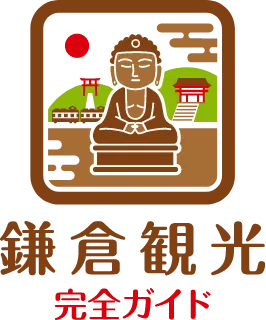Kaburaki Kiyokata Memorial Art Museum (鏑木清方記念美術館)
What Is the Kaburaki Kiyokata Memorial Art Museum (鏑木清方記念美術館)? — History and Origins
This museum stands on the former site of the renowned modern Japanese painter Kaburaki Kiyokata’s residence. The building incorporates original materials from his Kamakura Yukinoshita home, with the studio and lattice doors faithfully restored. Here, you can truly sense the atmosphere of Kiyokata’s daily life and creativity.
Kaburaki Kiyokata (鏑木清方) was born in 1878 in Kanda, Tokyo. Early in his career, he worked as an illustrator for newspapers and magazines before transitioning to Japanese-style painting. He became widely known for his depictions of daily life, seasonal scenes, and graceful images of women. Deeply versed in literature and theater, he created many works inspired by authors such as Higuchi Ichiyo (樋口一葉) and Izumi Kyoka (泉鏡花).
Highlights — Architecture, Artworks, and the Artist’s Presence
A highlight of the museum is the reconstructed artist’s studio, modeled after the plans of architect Yoshida Isoya (吉田五十八). Items dear to Kiyokata, like his glasses, brushes, and palette, are on display, creating a sense that the artist is still present. Pull-out display cases offer a close look at sketches, illustrated diaries, and preparatory drawings.
Exhibitions are updated 8–9 times per year, themed by season or subject, and feature everything from Kiyokata’s masterpieces to his later works. Every visit promises a new discovery.
Cultural Significance
The works of Kaburaki Kiyokata (鏑木清方) are valued not only for their elegance as bijin-ga (beautiful women paintings) but also as realistic records of life and customs in Meiji-era Tokyo. His art captures both beauty and history. Kiyokata himself said he “did not belong to any school, but valued emotion,” and his sensitive portrayal of human feelings continues to touch many visitors.
Unique Experiences and Workshops
Japanese painting workshops using traditional techniques such as mineral pigments (tsuchienogu) and sunago (fine metal powder) are very popular here. Even beginners can enjoy making scrolls, uchiwa fans, or lithographs—experiencing Japanese art with their own hands.
Unique Features
While there are no goshuin (temple stamps) or omikuji (fortunes), special admission discounts are sometimes offered to visitors wearing kimono or yukata, letting guests enjoy the atmosphere unique to Kamakura.
Access and Opening Hours
The museum is within easy walking distance from the nearest station. Opening hours are 9:00 a.m. to 5:00 p.m. (last admission 4:30 p.m.). Closed on Mondays (open if it is a holiday, then closed the following weekday), during exhibition changes, and at the end/start of the year. Advance notice is required for group visits.
Best Time to Visit
The best time to visit is early summer—especially mid to late June, during hydrangea (ajisai) season. Kaburaki Kiyokata (鏑木清方) loved hydrangeas so much he called himself “Ajisai-no-ya.” The stone path from the gate to the entrance is adorned with colorful blooms, creating a stunning harmony with the Japanese architecture, especially after rain.
Nearby Spots — Explore on Foot
Located in a quiet residential area, you’ll find other cultural facilities nearby: Kamakura Museum of National Treasures (鎌倉国宝館), Kamakura History and Culture Exchange Center (鎌倉歴史文化交流館), Kamakura City Kawakita Film Museum (川喜多映画記念館), and The Museum of Modern Art, Kamakura Annex (神奈川県立近代美術館鎌倉別館). Stamp rally events are sometimes held with these museums. Local cafés and sweet shops also offer a pleasant break within walking distance.
Recommended For — Interests and Styles
- Those interested in literature and Japanese painting
- Anyone who wants to enjoy art in a calm, quiet space
- People looking for indoor attractions on rainy days
- Families and couples seeking a cultural experience
- Long-term visitors who prefer a leisurely itinerary
If you stay at Tosh’s Place (トシズプレイス), you can visit places rarely included in day-trip itineraries and enjoy a more relaxed pace. The museum is ideal for peaceful, uncrowded visits. Its compact space naturally fits a slow-travel style, perfect for those who wish to “live like a local.”
Wrap-Up — Immerse Yourself in Kiyokata’s World of Art and Literature
This is a place where you can experience not only paintings but also the living, literary world of Kaburaki Kiyokata (鏑木清方). The recreated studio and carefully displayed works let every visitor experience a special moment. Escape the bustle of Kamakura and immerse yourself in the beauty and feeling of Japan.
